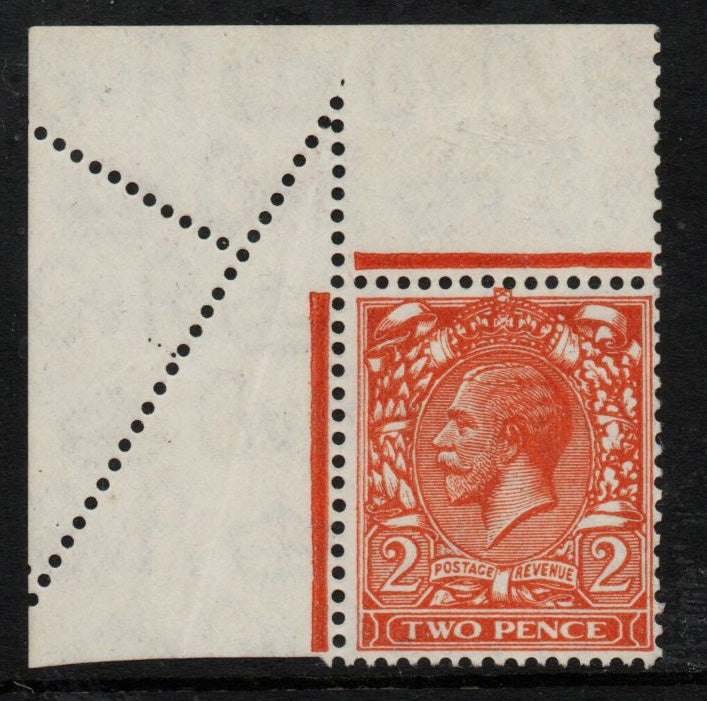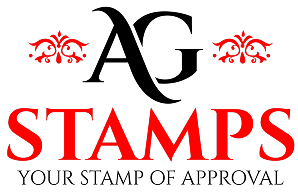
The Beauty of Stamp Printing Errors
Alistair GarnerShare
Corner Folds: The Beauty of Printing Errors in Collectible Postage Stamps
In the world of philately, there are countless ways in which stamps can vary, and among the most fascinating are those that result from printing errors. One unique and intriguing error occurs when a corner of the stamp sheet folds over during the printing process. This small misstep can create a distinctive type of collectible stamp—one that showcases the intricacies of stamp production and adds a layer of uniqueness that collectors prize. Let’s explore how these errors happen, why they’re valued, and how to recognize them.
How Folded Corners Happen
When stamps are printed, sheets are fed through complex printing machines to apply ink, phosphor, (on more modern stamps) and, eventually, perforations. In an ideal scenario, the sheets pass smoothly through each stage, but occasionally, a sheet’s corner may fold over by accident. This folding can happen due to a misfeed, a gust of air, or simply the fast pace of the printing process.

Image 1
When a corner is folded over before printing, the result is a partially unprinted or distorted area on the stamp, where the folded portion shields part of the paper from the ink. This scenario usually results on a portion of the stamp being printed on the reverse of the sheet. (See Image 1) After the ink has been applied, the sheets are prepared for perforation. If the fold occurred before this stage, the perforations on the affected corner may also end up misaligned or incomplete.

Image 2.
In other cases, the fold may occur after printing but before perforation, leading to unusual perforation patterns that create fascinating, one-of-a-kind designs. Similar to Image 2.


All Reigns, all printing processes are affected
Images 3 & 4
What Makes Folded Corner Stamps Unique?
Stamps with folded corners exhibit patterns and characteristics that make them instantly recognizable. Here’s why they stand out in the world of philately:
- Visual Distortion: The fold typically results in a blank, partially printed, or misaligned portion on the affected stamps. Some collectors liken these distortions to “miniature abstract art” created purely by chance. The imperfections capture the exact moment something went off-script during production, giving each folded corner stamp a sense of history and a story to tell.
- Misaligned or Incomplete Perforations: When a corner fold occurs before perforation, the area that was folded over may have perforations in unexpected places, or none at all. Incomplete or unusual perforations are considered unique features, as each error pattern is different.
- Rarity: Very few printing runs results in a folded corner. Because these errors occur at random, they are relatively rare, adding a sense of exclusivity to folded corner stamps. The scarcity, combined with the one-of-a-kind nature of each folded corner, makes them highly collectible.
- Insight into the Production Process: Folded corners give philatelists insight into the inner workings of stamp production. For collectors passionate about the history and mechanics of printing, folded corners highlight the complexities and challenges involved in mass-producing postage stamps.
- The likelihood that your fold is unique. Whilst a single folded corner of a sheet is usually the case, the chances of two consecutive sheets being folded is, although it has been seen, most unlikely.

Image 5. A fine example of a double paper fold
Why Collectors Value Folded Corner Stamp Errors
Collectors value folded corner stamps not only for their aesthetic appeal but also for the stories they tell. They represent an unexpected intersection between precision engineering and the unpredictability of physical processes. A folded corner stamp is a snapshot of a "happy accident" during production, giving it a narrative and uniqueness that perfectly printed stamps simply don’t have.

Image 6. A very large, possibly mid sheet fold
How to Identify Folded Corner Errors
Identifying a genuine folded corner error sometimes requires careful observation. Here are some tips for recognizing authentic folded corner stamps:
- Examine the Pattern: Usually a corner fold is fairly obvious but look for unprinted or partially printed areas that show clear signs of folding. Often, the fold line will be visible, showing where the paper shielded itself from the printing press.
- Check the Perforations: Misaligned or incomplete perforations in one corner of the stamp sheet often accompany folded corners. If the perforations seem irregular only in one area, this is a strong indicator that a fold was involved.
- Seek Professional Verification: As with all rare stamps, it’s best to have unusual stamps like folded corners authenticated by a philatelic expert or professional grading service. This can add credibility and value to your piece.
Adding Folded Corner Stamps to Your Collection
When collecting folded corner stamps, be prepared for variation. Each folded corner error is unique, making it both an art form and a historical artifact. Some collectors focus exclusively on error stamps, finding that these unique pieces offer more intrigue and individuality than perfectly printed stamps.

Image 7. Another example of a double corner fold, fold lines easily visible

Image 8. Fold before guillotining
For those who value artistry and the unexpected, folded corner errors can be a fascinating addition to any stamp collection. Not only do they provide visual interest, but they also add depth to one’s understanding of printing techniques, and they carry a piece of postal history that’s truly one-of-a-kind.
All of the images you see here, and more, are available to purchase in my store (Unless already sold). Call on 07721 651840 to check availability.
Please feel free to leave your comments below:
© AGStamps 2024

 Cookie Policy
Cookie Policy